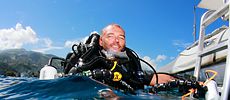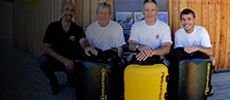ALTITUDE TEST DIVE
Thursday 3rd October 2019
Diver: Martin Parker Pilot: Dr Ryan Jackson
Flight Area: North Cornwall

AP Diving’s Managing Director Martin Parker took the opportunity of a flight with fellow aviator Dr Ryan Jackson on Thursday 3rd October to conduct altitude tests on a new breathing system prior to the systems use on a forthcoming Himalayas expedition…. and to re-confirm how an AP Inspiration closed circuit rebreather works at altitude.
The primary purpose of the flight was to test flow-rates from a supplemental oxygen breathing system for use at altitude where the air is too thin and the PO2 too low to support life. The “Top Out Aero” system has been developed for parachutists and allows oxygen to be fed from the aircraft’s on board oxygen supply for de-Nitrogenising prior to the flight, which prevents decompression sickness, and allows the parachutist to continually breathe from the aircraft’s supply as the plane climbs to altitude before then switching to a small lightweight carbon wound cylinder for the “jump.
Both pilot & passenger donned nose-fed systems throughout the flight and above 10,000 ft both had to be breathing oxygen or risk blackout. Ryan had the benefit of a system he had specifically set up previously with a cannula supply but Martin’s, in the true spirit of the home made rebreather man, knocked up a scuba 1st stage regulator with a 4mm OD pipe and industrial flow adjuster feeding a mask from the oxygen kit; fitting just over his nose it allowed verbal communication through the aircraft’s comms. While it looked rather silly, he had the benefit of using the company’s Flow volume “calibration instrument” set to “vol” to ensure that sufficient oxygen was delivered.
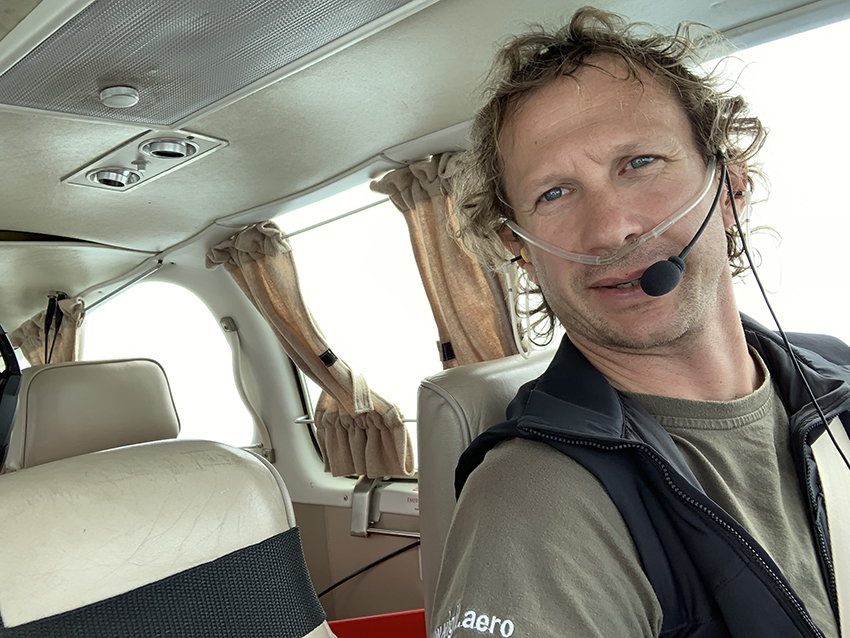
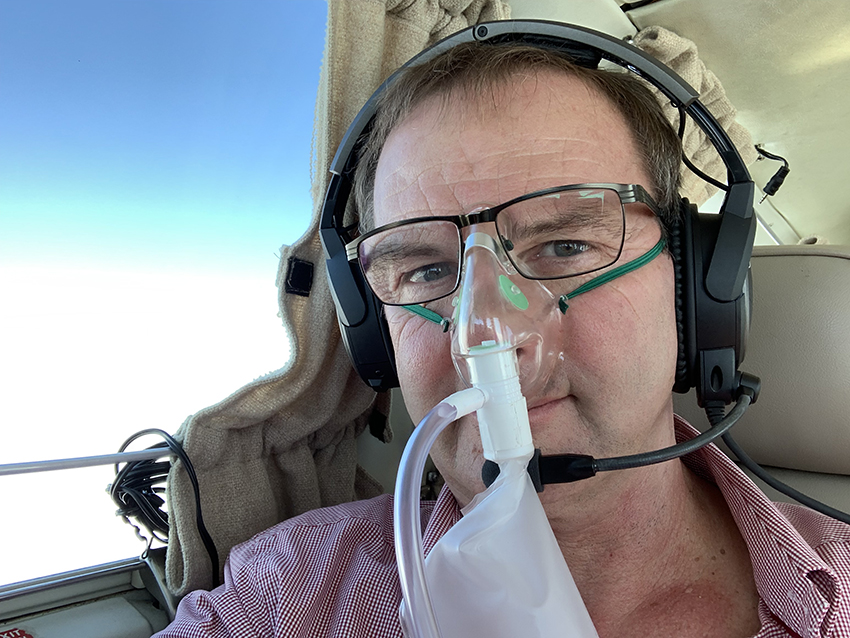
On the day, Hurricane Lorenzo was blowing across the Atlantic into the Western Approaches and while conditions were fine at take off, they knew it would be getting worse. However, the fuel injected, turbo charged, Beachcraft 33 allowed them to rapidly power up through the clouds to the blue skies above the storm. Getting down of course was a different matter.
Martin’s thinking was that the test flight was a good opportunity to take along an Inspiration - effectively conducting an altitude dive. He calibrated the unit at 5,000, 10,000 and 15,000ft to prove that there were no "error" warnings reported at these altitudes and that the rebreather functions without issue - which it did, with flying colours.
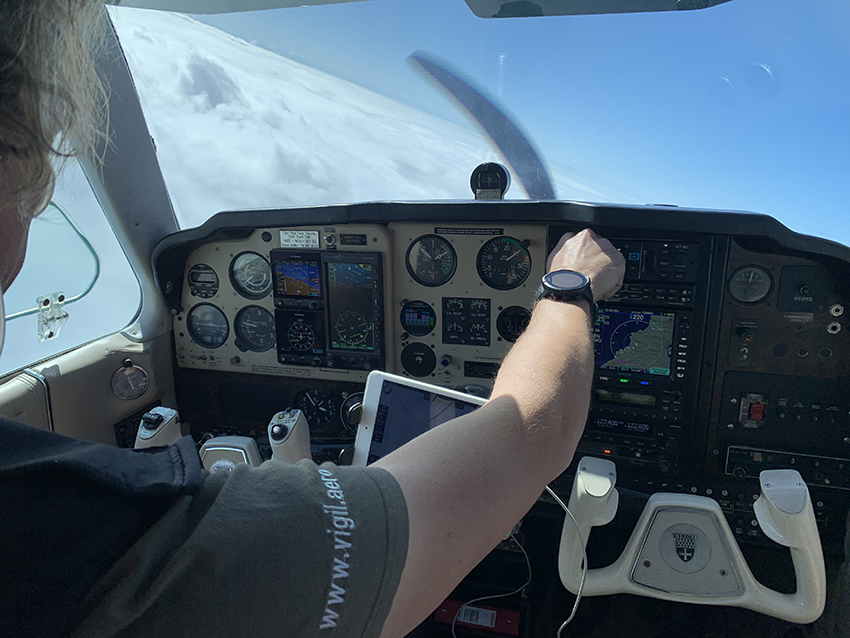
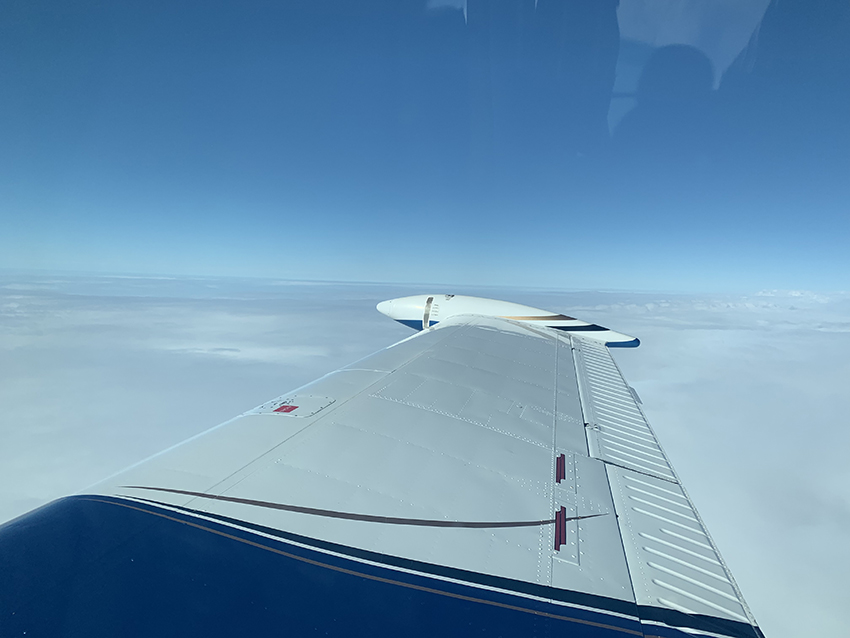
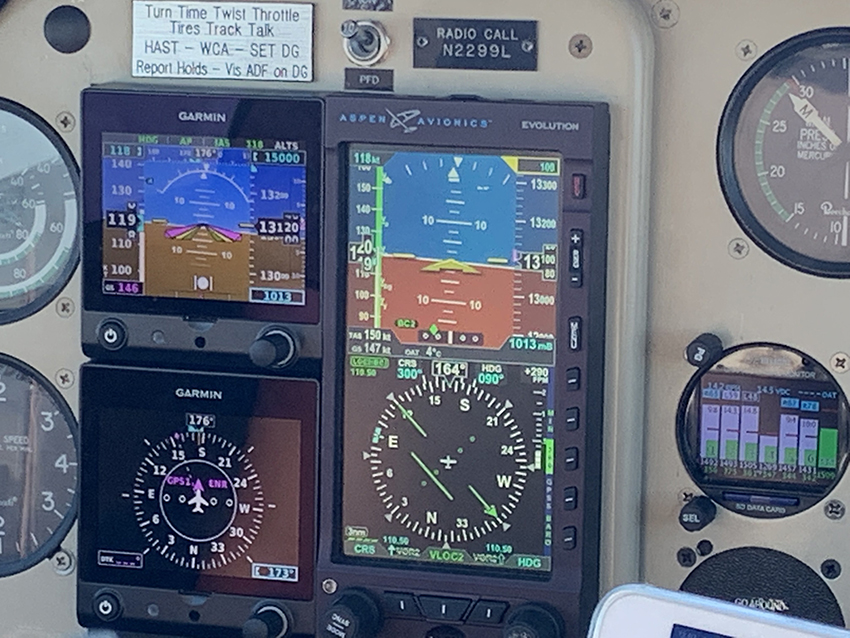
The flight effectively replicated a high lake dive without the need to travel half-way around the world to do it. The flight path they took circled around north Cornwall just a few miles away from AP Diving’s base in Helston.
To achieve a similar real-world test you would otherwise have to travel to somewhere like Lake Titicaca in Peru, which stands at 12,500ft / 3,820m, the “highest navigable” lake in the world. It is known that Inspiration divers have successfully dived at this altitude before now, but the test flight allowed Martin to see for himself how the unit performed.
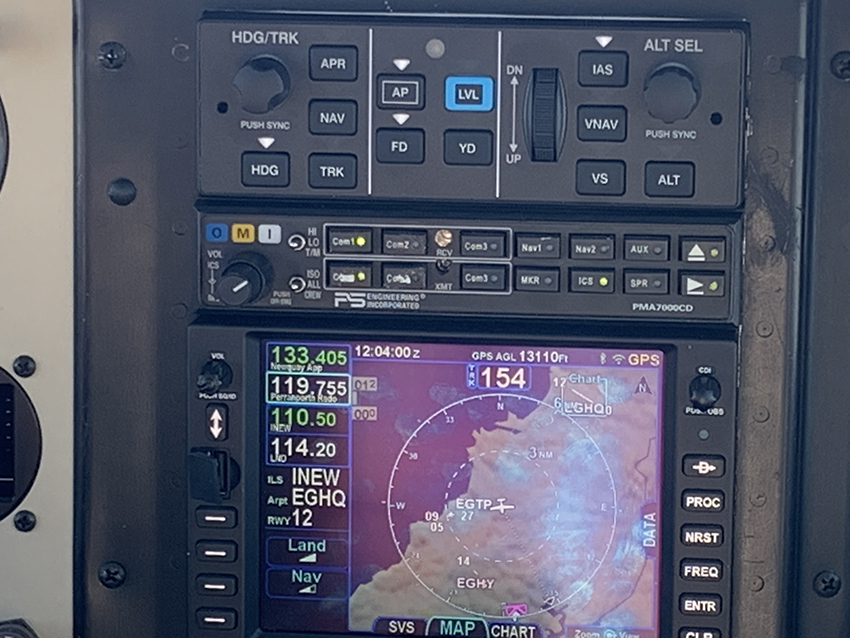
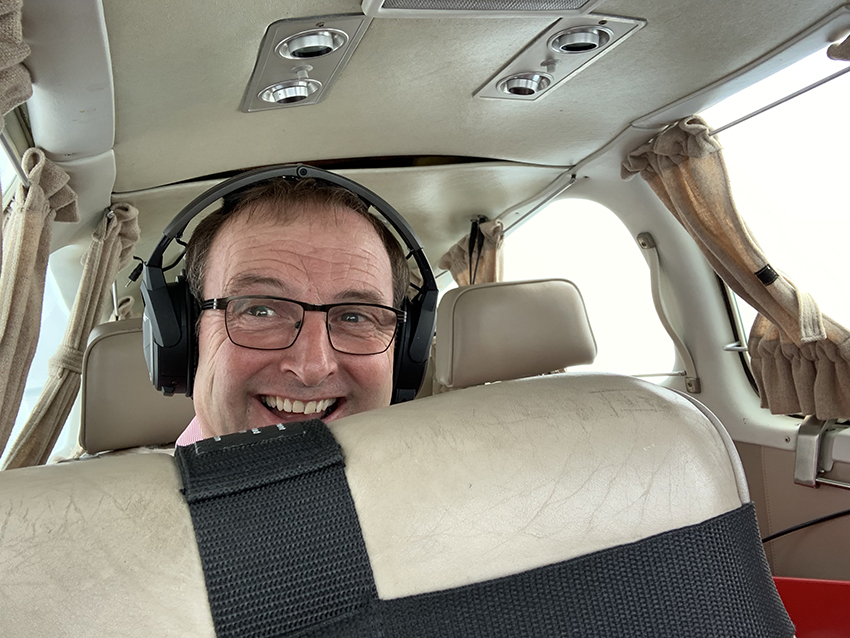
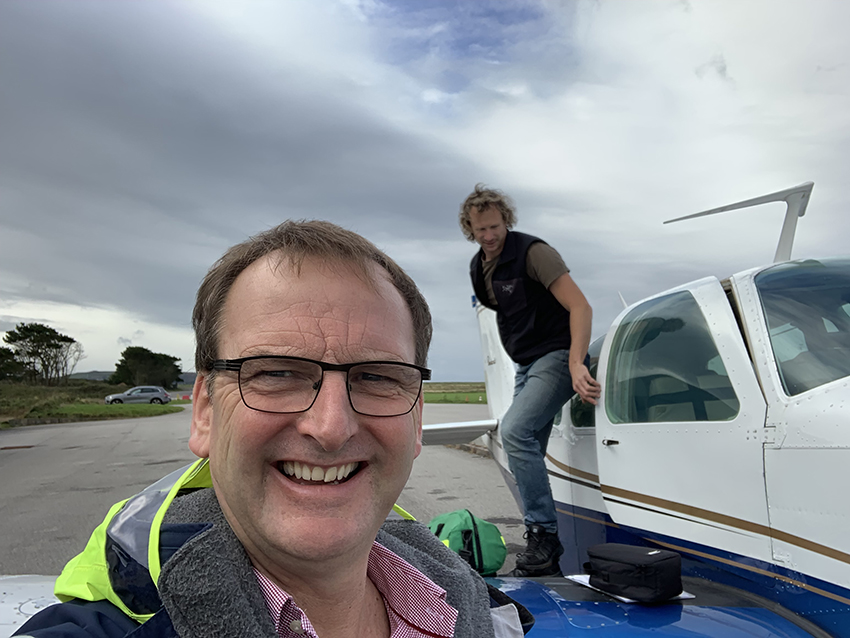
With all of the tests completed and “hurry up messages” coming from the air traffic controller at Newquay it was time to find the ground again without bumping into any commercial or military aircraft in the area. Newquay ATC came through, giving vectors to intercept their ILS where the aircraft’s newly installed Garmin autopilot locked onto the glide slope through the worst of it, breaking cloud at 800 ft for a visual, if somewhat bumpy, return to Perranporth with winds gusting at 35-40 knots.
Safely on the ground, Ryan packed up the units and took them to Nepal where a series of successful flights culminated in setting a new World record.
https://cpsworld.com/record-breaking-everest-parachute-expedition/
Why didn’t you go Martin? “I have jumped out of an aircraft once – that was enough for me” – “but seriously, these guys are at the top of their game with many years of parachuting experience – it would be like me taking Ryan on the Britannic with only a handful of dives behind him – unthinkable”.
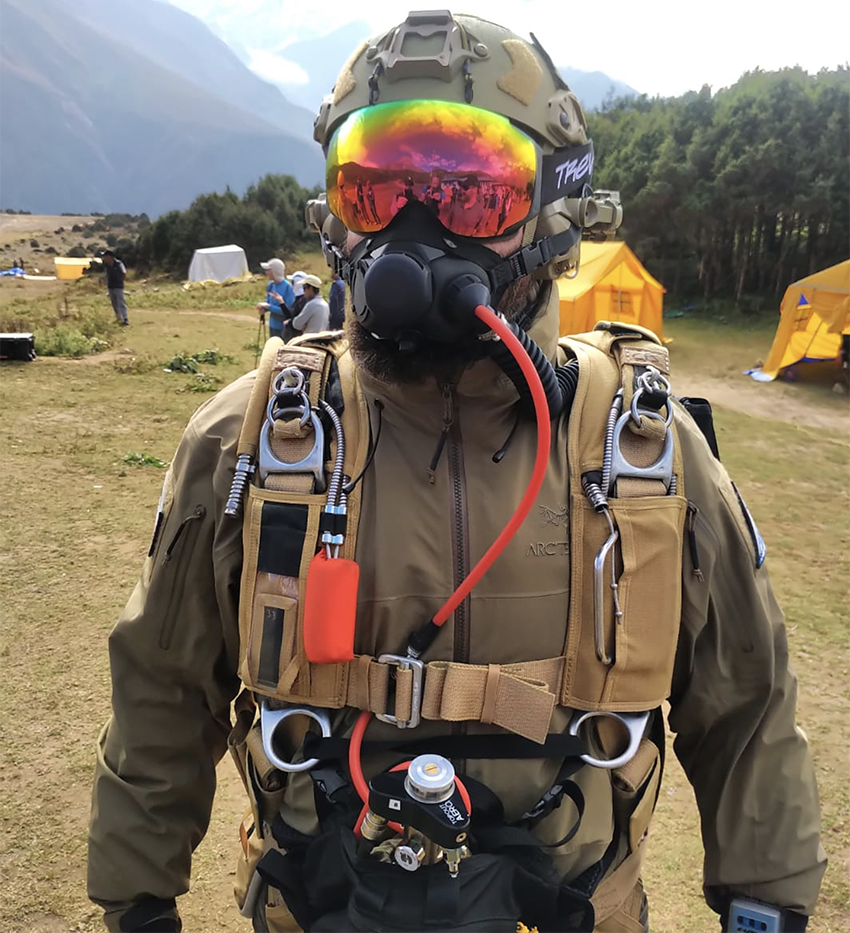
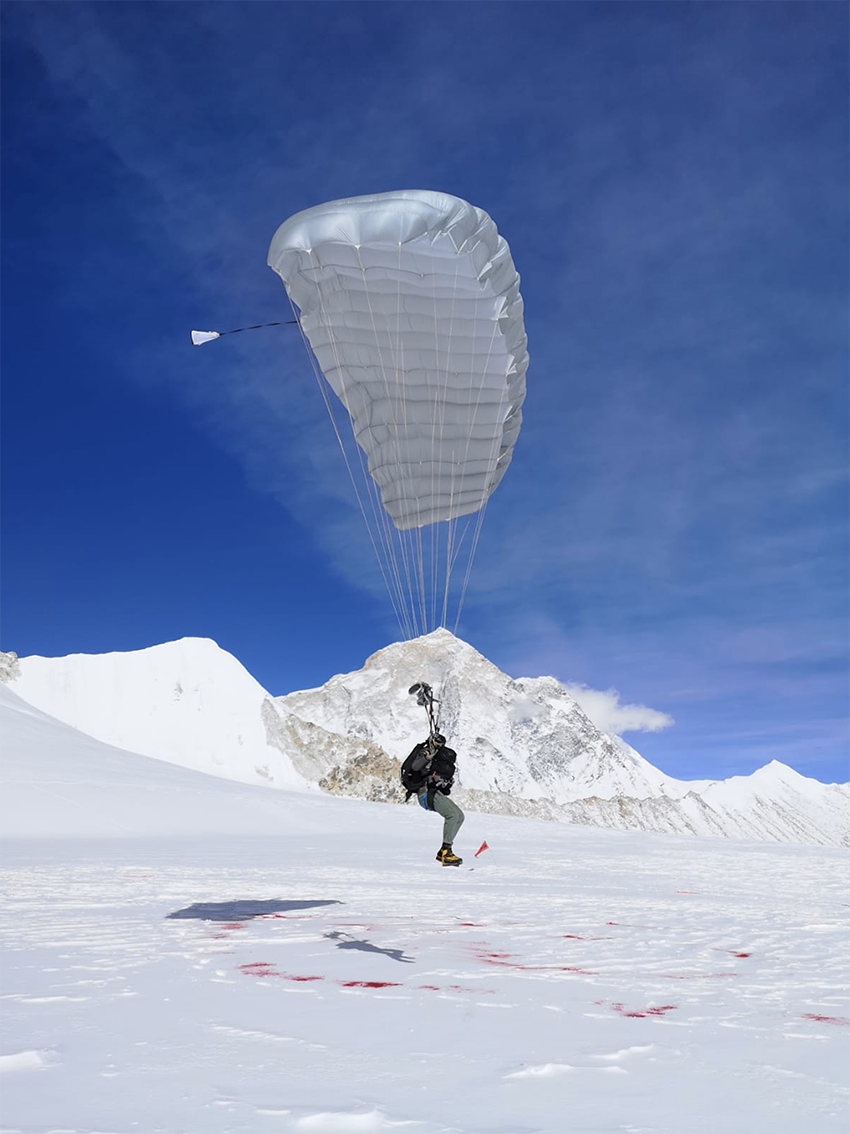
Mt Makalu in the background - the 5th highest mountain in the world at 7,828ft, 12 miles SE of Everest




